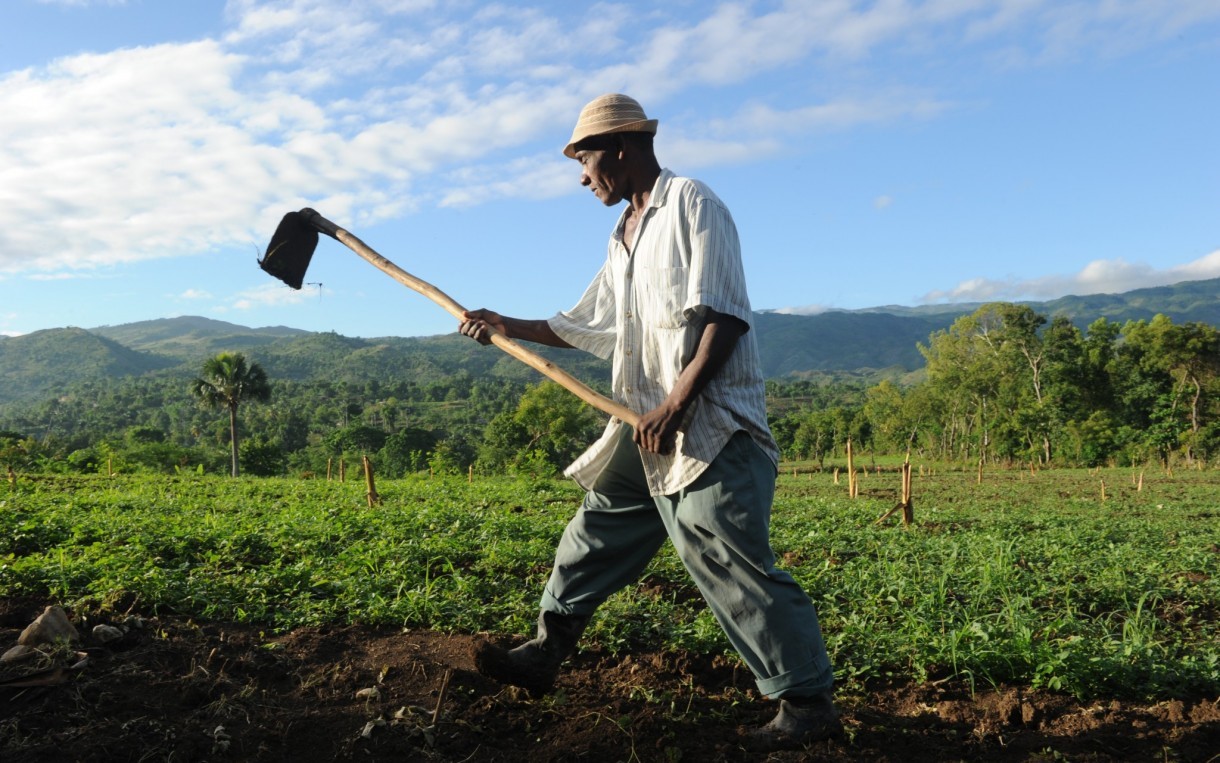
Oblin Tuse, 56, prepares the soil for planting in Belladere, Haiti in May 2010. The region has problems with very severe erosion and with landslides. Photo: Ami Vitale/Oxfam America
Haiti is the poorest country in Latin America and the Caribbean and one of the poorest countries in the world. Its economy, and its agricultural sector especially, is highly vulnerable to external shocks and climate change.
Agricultural productivity is very low compared to other countries in the region, leading to even higher poverty rates in rural areas, as well as poor nutrition.
To address the situation, the Government of Haiti and the Inter-American Development Bank (IDB) have devised an investment program called Agricultural and Agroforestry Technological Innovation Program (in French Programme d’Innovation Technologique pour l’Agriculture et l’Agroforesterie, PITAG).
During 2017 and 2018, FONTAGRO provided technical support to help shape the program, which aims to increase agricultural productivity and improve the use of natural capital through the adoption of sustainable technologies that are suitable for small farmers.
FONTAGRO reviewed existing documentation from previous projects carried in Haiti in order to identify the main constraints to yield in the major cropping systems in Haiti, namely: cocoa, coffee, legumes, maize and sorghum, vegetables, rice, and roots and tuber crops. This allowed to identify the key issues that the PITAG would need to address, and to take stock, for each cropping system, of the solutions previously proposed.
FONTAGRO also assisted with the drafting of all the documents and procedures to be followed during the implementation of the program, ensuring full transparency and accountability of the project proposals funding process.
To know more about the PITAG and the results of our analysis please check our web story at http://digital.fontagro.org/en/impact-stories/helping-shape-haiti-pitag.
You may also read more about the project in: https://www.fontagro.org/proyecto/climate-technology-transfer-mechanisms-and-networks-in-latin-america-and-the-caribbean/
